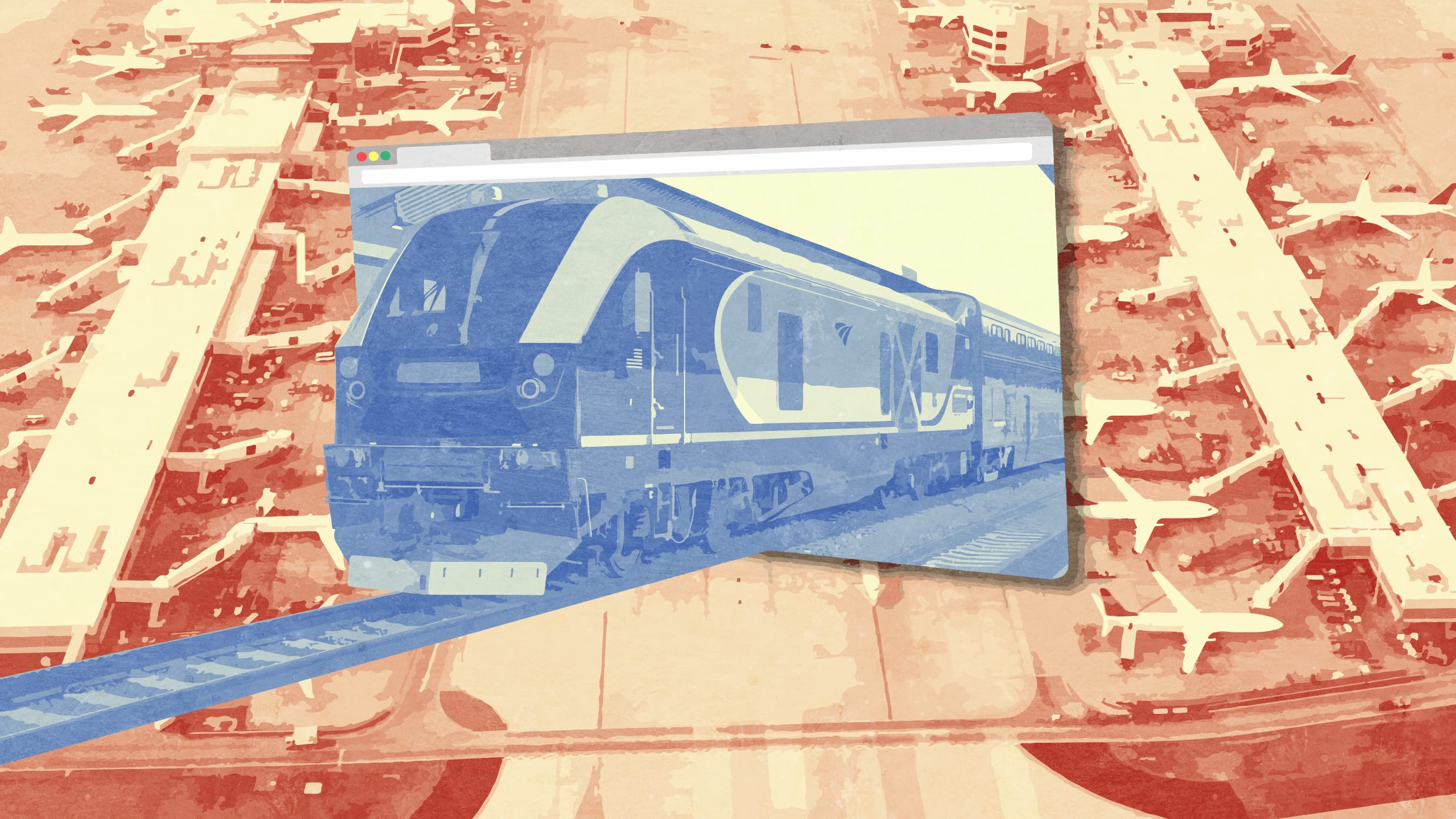If you search the distance from New York to Boston, Google will show you that the trip takes about five hours to drive. Underneath that map, Google now shares information for making the same journey by train via Amtrak, which takes about four hours, including details on Amtrak train schedules.
And if you Google flights between the two cities, underneath the preview of flight prices at the top of the page, users will also see a heading that reads “Consider taking the train.” Traveling by rail takes longer than flying, but the search engine notes, next to a graphic of a little green leaf, it’s a “more climate-friendly” option. When searching for flights from October 12 to October 14, most Amtrak options were, in fact, cheaper than flights.
These details are part of a new integration that Amtrak launched with Google this week to support more sustainable transportation. That integration pulls in direct, up-to-date Amtrak data, so that people searching on Google can see train departure times, trip lengths, and fares right on the Google Search results page. To book an Amtrak train trip, users can just click through from the search results and complete their purchase on Amtrak’s website, without reentering all their trip details.
The environmental toll of planes versus trains
Air travel comes with a large environmental footprint, and short-haul flights like the one between New York and Boston (which, at under 200 miles, takes less than two hours) are especially polluting. Short flights (or those under about 620 miles) have a higher carbon intensity than longer trips. That’s in part because the energy-intense takeoff is a bigger portion of the entire flight, whereas on long-haul flights, planes can “cruise” for longer. Also, short flights are often done with less fuel-efficient planes, according to the International Council on Clean Transportation.
In 2021, France said it would ban any short flight that could be replaced by a 2.5-hour-or-less train ride as a way to curb carbon emissions. The U.S.’s rail network isn’t as expansive as Europe’s, but more Americans have been turning to train travel lately. When Amtrak opened a new rail line between Chicago and the Twin Cities this past summer, ridership exceeded the company’s expectations.
That isn’t the only route that Amtrak is hoping will increase. The company has a plan to double ridership by 2040, to 66 million passengers. Along with Amtrak, intercity rail is seeing a revival thanks to companies like Brightline, which has built a private passenger rail route in Florida and is now working on a high-speed rail that will run between Las Vegas and Los Angeles.
Integrating Google with Amtrak
Amtrak hopes the data integration with Google helps even more passengers choose a train over a plane trip. Each time someone takes Amtrak rather than flying, the company says, they can reduce their carbon footprint by up to 72%.
“By integrating our schedules and fares directly into Google’s platforms, we’re not only enhancing the customer experience, but we are also empowering them to potentially make more sustainable travel choices,” Christian Zacariassen, executive vice president of Digital Technology & Innovation at Amtrak, said via email. “As we mark another step in our commitment to innovation and customer service, we’re leveraging technology to provide real-time information that helps travelers make more informed decisions.”
Google has been nudging users toward lower-carbon travel options in a few ways. The search engine has also added information for bus travel in its results, and shows public transit or walking suggestions next to driving routes, when the travel times are “comparable and practical” in Maps. It first launched train pricing and schedules in select countries including Germany, Spain, Italy, and Japan back in 2022.
Apply to the Most Innovative Companies Awards and be recognized as an organization driving the world forward through innovation. Final deadline: Friday, October 4.

